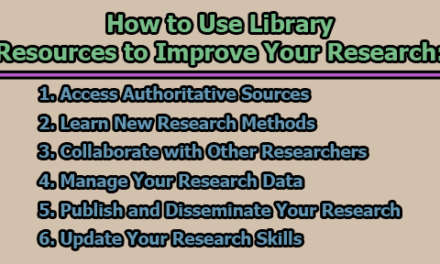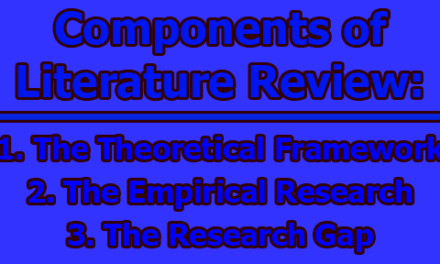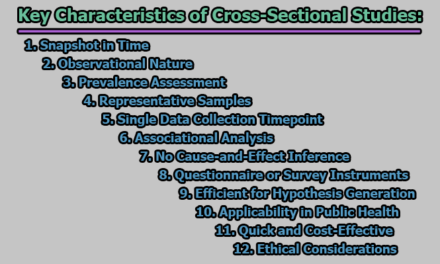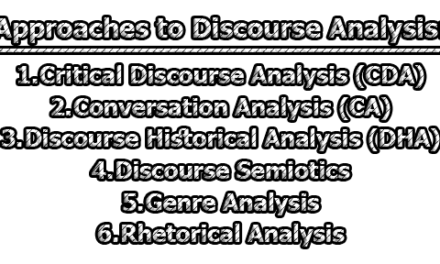Triangulation in Research:
Research is a systematic process aimed at gaining a deeper understanding of phenomena and finding credible answers to questions. However, challenges such as subjectivity and bias can affect the reliability of findings. Triangulation, a methodological tool, helps researchers improve the accuracy and depth of their studies by using multiple approaches. This article explains the concept of triangulation in Research, its types, benefits, challenges, and how it can be applied effectively.
Definition of Triangulation:
There are several definitions of triangulation; some of the necessary ones are as follows:
Triangulation is described as the use of multiple methodologies or perspectives to examine the same phenomenon, with the aim of enhancing the credibility and validity of findings (Flick, 2018).
Denzin (1978) defines triangulation as a strategy for reducing bias and improving the accuracy of research findings by incorporating different data sources, methods, investigators, or theoretical perspectives.
According to Creswell and Poth (2017), triangulation involves combining multiple methods or data sources to develop a comprehensive understanding of the subject under study.
Patton (2015) explains triangulation as a method for cross-verifying data and interpretations by employing multiple approaches in qualitative research.
Yin (2018) describes triangulation as a means to increase research validity by using multiple data sources and analytical techniques.
From the above definitions, we can say that triangulation is a methodological approach that leverages diverse tools, perspectives, and frameworks to ensure the robustness, depth, and credibility of research outcomes.
Types of Triangulation:
Triangulation can be divided into four main types: data triangulation, methodological triangulation, researcher triangulation, and theoretical triangulation. Each type contributes to the thoroughness and accuracy of research in unique ways.
- Data Triangulation: Data triangulation focuses on collecting information from various times, locations, groups, or contexts to provide a more comprehensive picture of the phenomenon being studied. The primary aim is to explore how different circumstances or conditions influence the data and findings, allowing for a richer and more reliable analysis.
For example, a researcher studying public opinion on climate change could use:
- Temporal Variations: Surveys conducted at different points in time to observe changes in public opinion over weeks, months, or years.
- Spatial Differences: Data collected from various geographic regions to account for location-based influences on attitudes and behaviors.
- Demographic Diversity: Input from different population groups, such as age, gender, ethnicity, or socioeconomic status, to reflect diverse perspectives.
Benefits of Data Triangulation:
- Enhanced Credibility: By using diverse sources, researchers can cross-validate findings, increasing the reliability of their results.
- Holistic Understanding: Data triangulation provides a multidimensional view, capturing the complexity and richness of the subject matter.
- Bias Reduction: Collecting data from varied sources helps minimize biases associated with specific times, places, or populations.
- Insight into Variability: Researchers can uncover trends and variations across different contexts, offering deeper insights into dynamic phenomena.
Creswell and Poth (2017) argue that data triangulation strengthens internal validity in qualitative research by enabling cross-comparisons among diverse datasets.
Practical Example of Data Triangulation:
Imagine a researcher examining public attitudes toward a government policy:
- Temporal Data: Surveys conducted before, during, and after the policy’s implementation to analyze changes in opinion over time.
- Spatial Data: Focus groups held in urban, suburban, and rural areas to capture regional differences in perspective.
- Demographic Data: Interviews with individuals from varied age groups, education levels, and professional backgrounds to ensure representation across diverse societal segments.
By triangulating these data sources, the researcher can identify recurring themes, disparities, and context-dependent nuances, leading to a more reliable and insightful conclusion.
Challenges of Data Triangulation:
While data triangulation offers numerous benefits, it is not without its challenges:
- Time and Resource Intensive: Collecting data from multiple sources requires significant effort, time, and financial resources.
- Data Integration Complexity: Reconciling and synthesizing data from different sources can be analytically demanding.
- Data Inconsistencies: Diverse datasets may yield conflicting findings, requiring careful interpretation to resolve discrepancies.
Best Practices for Data Triangulation:
To maximize the effectiveness of data triangulation, researchers should:
- Define Clear Objectives: Specify how each data source will contribute to addressing the research question.
- Select Diverse Sources: Ensure data sources are sufficiently varied to capture different dimensions of the phenomenon.
- Standardize Collection Methods: Maintain consistency in data collection protocols to ensure comparability across sources.
- Document Data Processes: Record the origin, context, and limitations of each data source to enhance transparency.
- Critically Analyze Discrepancies: Treat inconsistencies as opportunities to uncover hidden complexities rather than weaknesses.
Data triangulation is a powerful tool for enhancing the depth, reliability, and credibility of research findings. By drawing on diverse sources of information, researchers can uncover a more complete and nuanced picture of their subject matter. Despite its challenges, when executed thoughtfully, data triangulation can significantly strengthen the rigor of any study, particularly in fields where complexity and variability are inherent.
- Methodological Triangulation: Methodological triangulation involves combining qualitative and quantitative methods, or multiple approaches within a single paradigm, to examine the same phenomenon. The goal is to capture different dimensions of the research problem and cross-validate findings from one method with those of another.
For example, a researcher investigating workplace productivity might:
- Use quantitative methods, such as surveys, to measure employee output.
- Complement this with qualitative methods, such as interviews, to explore employees’ experiences and perceptions of workplace policies.
This approach helps mitigate the limitations of each method. While surveys provide broad, measurable data, interviews offer depth and context, resulting in a more holistic analysis.
Types of Methodological Triangulation: Methodological triangulation can take two primary forms:
- Within-Method Triangulation: Using multiple techniques within the same methodological approach. For instance, a researcher might use structured interviews and open-ended surveys within a qualitative study to gather data.
- Between-Method Triangulation: Combining different methodological approaches, such as using both qualitative and quantitative methods, as described above.
Benefits of Methodological Triangulation:
- Enhanced Credibility: Cross-verifying findings across methods increases the reliability of the results.
- Comprehensive Insights: Diverse methods provide a fuller picture of the phenomenon, capturing both numerical trends and rich contextual details.
- Mitigation of Bias: Using varied methods minimizes the biases inherent in any single approach, leading to a more balanced analysis.
- Filling Knowledge Gaps: One method can address the weaknesses or gaps left by another, creating a more robust understanding of the research topic.
Flick (2018) notes that methodological triangulation is especially valuable in complex research areas, as it ensures a multidimensional view of the subject.
Practical Example of Methodological Triangulation: Imagine a study examining the impact of a new educational policy on student performance:
- Quantitative Data Collection: Be able to standardized tests to assess changes in academic performance.
- Qualitative Data Collection: Conduct focus group discussions with teachers and students to gather in-depth perspectives on how the policy affects learning experiences.
- Document Analysis: Review policy documents and implementation guidelines to understand the intended objectives and practical challenges.
By triangulating these methods, researchers can explore not only the measurable outcomes but also the nuanced experiences and contextual factors influencing those outcomes.
Challenges of Methodological Triangulation: Despite its strengths, methodological triangulation presents some challenges:
- Resource Intensive: Employing multiple methods requires significant time, effort, and financial resources.
- Complex Data Integration: Analyzing and synthesizing findings from diverse methods can be analytically demanding.
- Conflicting Results: Different methods may yield inconsistent results, requiring careful interpretation to reconcile discrepancies.
- Skill Demands: Researchers must be proficient in various methodologies, which may necessitate interdisciplinary collaboration or additional training.
Patton (2015) emphasizes that the success of methodological triangulation depends on the careful planning and integration of methods to ensure consistency and alignment with the research objectives.
Best Practices for Methodological Triangulation: To maximize the benefits of methodological triangulation, researchers should:
- Define Research Objectives Clearly: Identify specific aspects of the research problem that each method will address.
- Select Complementary Methods: Choose methods that align with the study’s goals and provide diverse perspectives.
- Plan for Data Integration: Develop a strategy for combining and interpreting findings from different methods.
- Allocate Sufficient Resources: Ensure adequate time, funding, and expertise are available for the implementation of multiple methods.
- Document Methodology: Maintain detailed records of each method’s processes, limitations, and contributions to enhance transparency and replicability.
Methodological triangulation is a powerful approach for strengthening the validity and depth of research findings. By combining diverse methods, researchers can achieve a more comprehensive and balanced understanding of their study topics. While it requires careful planning and resource investment, the benefits—enhanced credibility, nuanced insights, and reduced bias—make it an indispensable tool for rigorous research. When applied thoughtfully, methodological triangulation empowers researchers to explore complex phenomena from multiple perspectives, uncovering insights that might otherwise remain hidden.
- Researcher Triangulation: In researcher triangulation, multiple individuals work together to examine the same data or problem. By doing so, the study benefits from varying expertise, viewpoints, and interpretations, reducing the likelihood of subjective bias or oversight. This collaborative process often results in a more comprehensive and nuanced analysis of the research topic.
For example:
- A team of researchers studying workplace diversity might independently analyze the same employee interviews, each focusing on different themes such as inclusion, cultural dynamics, and organizational policies.
- They then compare their findings, synthesizing overlapping insights while discussing and resolving any differences in interpretation.
Key Benefits of Researcher Triangulation:
- Reduction of Bias: By involving multiple researchers, the study is less influenced by any single individual’s assumptions or preconceptions.
- Enhanced Credibility: Independent validation of findings by different researchers increases the reliability and trustworthiness of the results.
- Diverse Expertise: Each researcher brings unique knowledge and skills, enriching the analysis and uncovering insights that might be overlooked by a single investigator.
- Improved Objectivity: Collaborative discussions encourage critical reflection, helping researchers avoid tunnel vision and ensuring a balanced interpretation of the data.
- Cross-Validation of Findings: Discrepancies between researchers’ analyses can highlight areas requiring further investigation, strengthening the study’s overall robustness.
Yin (2018) highlights that researcher triangulation is particularly valuable in case studies, where complex data often necessitates varied interpretations.
Practical Example of Researcher Triangulation: Consider a study exploring the impact of remote work on employee productivity:
- Data Collection: Three researchers might conduct interviews with employees, each focusing on a specific aspect, such as productivity challenges, work-life balance, or technological barriers.
- Independent Analysis: Each researcher analyzes the transcripts independently, identifying themes and patterns.
- Collaborative Discussion: The researchers then convene to compare their findings, discussing any differences and synthesizing their insights into a cohesive narrative.
This process ensures that the study captures a broad range of experiences and perspectives, resulting in a richer and more balanced analysis.
Challenges of Researcher Triangulation: While researcher triangulation offers significant advantages, it also presents certain challenges:
- Coordination Requirements: Effective collaboration requires clear communication, defined roles, and mutual understanding among team members.
- Resource Demands: Involving multiple researchers increases the need for time, funding, and logistical support.
- Potential for Conflict: Disagreements between researchers about data interpretation or findings can complicate the analysis process.
- Data Overlap Issues: Ensuring consistency in how researchers handle and analyze data can be challenging, particularly in large teams.
Patton (2015) advises that teams establish clear protocols and foster open communication to address these challenges effectively.
Best Practices for Researcher Triangulation:
- Define Roles Clearly: Assign specific responsibilities to each researcher to avoid duplication of effort and ensure comprehensive coverage.
- Establish Common Frameworks: Develop shared guidelines for data collection, coding, and analysis to maintain consistency.
- Promote Open Dialogue: Encourage regular discussions where researchers can share insights, challenge assumptions, and resolve conflicts constructively.
- Document the Process: Keep detailed records of individual analyses, team discussions, and decisions to enhance transparency and replicability.
- Leverage Diverse Expertise: Assemble a team with complementary skills and knowledge areas to maximize the depth and breadth of the study.
Researcher triangulation is a vital tool for minimizing bias and enhancing the credibility of research findings. By drawing on multiple perspectives and expertise, this approach ensures a more balanced and comprehensive analysis of complex phenomena. While it requires careful planning and collaboration, the benefits—richer insights, reduced subjectivity, and increased reliability—make it an invaluable asset in both qualitative and quantitative research. Researchers who embrace triangulation can unlock deeper, more nuanced understandings, advancing the rigor and impact of their work.
- Theoretical Triangulation: In theoretical triangulation, researchers intentionally apply different theoretical perspectives to interpret the same dataset. Each theory brings its own assumptions, concepts, and analytical focus, revealing insights that might not be apparent through a singular framework. This method is especially useful in complex studies where no single theory adequately explains all observed phenomena.
For example: A study on student motivation might use Self-Determination Theory (SDT) to examine intrinsic versus extrinsic motivations, while also applying Expectancy-Value Theory (EVT) to explore how expectations of success and task value influence motivation. Together, these frameworks provide a richer understanding of the factors driving student behavior.
Key Benefits of Theoretical Triangulation:
- Deeper Understanding: Applying multiple theories allows researchers to explore different dimensions of a phenomenon, capturing its complexity more effectively.
- Reduction of Bias: Using diverse theoretical perspectives minimizes the influence of biases associated with a single framework.
- Enhanced Analytical Rigor: The interplay between theories fosters critical thinking, encouraging researchers to evaluate their findings from multiple angles.
- Identification of Gaps: Comparing interpretations across theories can reveal areas where existing frameworks may fall short, guiding further research.
- Comprehensive Insights: Theoretical triangulation enables a holistic view by integrating complementary explanations and perspectives.
Flick (2018) emphasizes that theoretical triangulation strengthens the interpretive depth of qualitative research, making it a cornerstone of robust analysis.
Practical Example of Theoretical Triangulation: Imagine a study investigating workplace stress among employees:
- Theory A: Job Demands-Resources (JD-R) Theory focuses on the balance between job demands and available resources, highlighting how resource deficits contribute to stress.
- Theory B: Cognitive Appraisal Theory examines how individuals perceive and evaluate stressors, emphasizing subjective interpretations of stress.
- Theory C: Social Support Theory explores how relationships and support systems mitigate stress.
By applying these theories simultaneously, the researcher can analyze stress from organizational, psychological, and social perspectives, creating a more comprehensive picture of the issue.
Challenges of Theoretical Triangulation: Despite its advantages, theoretical triangulation also presents certain challenges:
- Theoretical Complexity: Understanding and applying multiple frameworks requires substantial knowledge and expertise.
- Conflicting Interpretations: Different theories may lead to contrasting or even contradictory conclusions, complicating the synthesis process.
- Time-Consuming Process: Integrating multiple theories demands additional time for reading, analysis, and reconciliation of findings.
- Risk of Overloading: Introducing too many theories can dilute the focus and clarity of the analysis.
Miles, Huberman, and Saldaña (2020) caution that researchers must carefully select complementary theories to avoid analytical confusion and maintain coherence.
Best Practices for Theoretical Triangulation:
- Choose Relevant Theories: Select theories that align with the research objectives and complement each other in explaining the phenomenon.
- Define Theoretical Contributions: Clearly outline what each theory contributes to the analysis to avoid redundancy.
- Maintain Analytical Focus: Balance the use of multiple frameworks to ensure the study remains cohesive and focused.
- Document Theoretical Application: Provide detailed explanations of how each theory was applied to the data, enhancing transparency and replicability.
- Reconcile Contradictions: When theories produce conflicting interpretations, use critical analysis to determine the most plausible explanation or consider incorporating both perspectives.
Theoretical triangulation broadens the scope and depth of research by leveraging diverse conceptual lenses. While it requires careful planning, critical thinking, and analytical expertise, the benefits—enhanced rigor, reduced bias, and comprehensive insights—make it a powerful tool for understanding complex phenomena. By integrating multiple theories, researchers can uncover hidden dimensions of their subject matter, advancing both theoretical and practical knowledge in their field.
Combining Triangulation Types:
While each type of triangulation offers distinct advantages, combining them can significantly elevate the rigor and credibility of research. For example, a study might incorporate data triangulation to gather diverse perspectives, methodological triangulation for a balanced analysis, and researcher triangulation to mitigate individual biases. Such an integrative approach ensures findings are durable, well-rounded, and reliable.
Benefits of triangulation:
- Reduces Bias: By employing multiple methods, theories, or investigators, triangulation minimizes potential biases inherent in any single approach.
- Increases Validity: Utilizing diverse tools to examine the same subject enhances the validity and robustness of the findings.
- Establishes Credibility: Triangulation provides a more comprehensive view of the research problem, thereby strengthening the credibility of the research.
- Confirms Findings: Cross-verification of findings from multiple sources reinforces their accuracy and reliability.
- Improves Understanding: By gathering data from various perspectives, triangulation facilitates a deeper and more comprehensive understanding of the phenomenon under study.
- Enhances Analysis: Triangulation aids in the analysis and interpretation of findings by providing a richer and more nuanced dataset.
- Improves Measurement: In fields like construction, agriculture, and urban planning, triangulation contributes to more precise and accurate measurements.
Challenges of Triangulation:
While triangulation strengthens research, it presents some challenges:
- Time and Effort: Managing multiple datasets or methods can be time-consuming.
- Resource Demands: Financial and logistical requirements increase with complexity.
- Integration Complexity: Synthesizing diverse findings is analytically demanding.
- Interpretive Issues: Reconciling conflicting theories or data requires careful thought.
Patton (2015) suggests that effective triangulation requires meticulous planning to overcome these challenges.
Tips for Effective Triangulation:
To maximize the benefits of triangulation, researchers can:
- Define Clear Goals: Understand how triangulation will address specific research issues.
- Prepare Resources: Ensure adequate time, funding, and expertise.
- Standardize Methods: Use consistent protocols for data collection and analysis.
- Encourage Collaboration: Foster teamwork among researchers.
- Document Thoroughly: Keep detailed records to enhance transparency and replicability.
Bryman (2021) highlights that systematic planning and thorough documentation are crucial for successful triangulated studies.
At the end of the day we can say that triangulation stands as a cornerstone of rigorous research, offering a pathway to better-off, more credible insights. By integrating diverse methods, data sources, researchers, and theories, researchers can minimize bias and enhance the depth of their studies. While demanding in terms of time and resources, the benefits—improved validity, reliability, and comprehensiveness—make it an indispensable strategy in modern research.
References:
- Bryman, A., et al. (2021). Social Research Methods. Oxford University Press. ISBN: 9780190853662. https://global.oup.com/academic/product/social-research-methods-9780190853662/
- Creswell, J. W., & Poth, C. N. (2017). Qualitative inquiry and research design: Choosing among five approaches (4th ed.). SAGE Publications.
- Denzin, N. K. (1978). The research act: A theoretical introduction to sociological methods (2nd ed.). McGraw-Hill.
- Flick, U. (2018). An introduction to qualitative research (6th ed.). SAGE Publications.
- Miles, M. B., Huberman, A. M., & Saldaña, J. (2020). Qualitative data analysis: A methods sourcebook (4th ed.). SAGE Publications. https://us.sagepub.com/en-us/nam/qualitative-data-analysis/book246128/
- Patton, M. Q. (2015). Qualitative research and evaluation methods (4th ed.). SAGE Publications. https://us.sagepub.com/en-us/nam/qualitative-research-evaluation-methods/book232962/
- Yin, R. K. (2018). Case study research and applications: Design and methods (6th ed.). SAGE Publications. https://us.sagepub.com/en-us/nam/case-study-research-and-applications/book250150/

Library Lecturer at Nurul Amin Degree College










